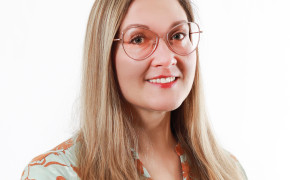Public and private actors share a sponsorship practice to cover the maintenance of a piece of modern sculpture by a renowned local artist.
The sculpture ‘Upstream Waters’ created by artist Eero Hiironen, first erected in 1983, combines a large steel structure (7m high, 5T) with a built water element. Along the years, the location became dated and as the keeping of the sculpture was ignored, the value of the art piece was jeopardised. As multiple funding applications for the move of the sculpture were rejected, the owner of the sculpture (local cultural heritage association, private/third sector) and the city joined forces to secure its future. Due to the size and structure of the art piece the move was expensive, but active negotiations with enterprises, associations and private persons, helped to achieve the sculpture’s move to a more central location. The adjacent ‘Water Trail’ leads to see all Hiironen’s sculptures in the municipality centre with QR-code signs for information online.
A key part of the move was the agreement on godparenting practice between the local heritage association and the city: the city lets the land area for the sculpture on very agreeable terms, covers for its insurance expenses and acts as the godparent every third year. The cultural heritage association calls for other godparents for the gap years. The godparent(s) is asked to fund the annual maintenance costs of the sculpture, including technics of the water element and lighting, for one year at a time. The ‘godparenthood’ can also be shared among several parties. In return, godparents are offered eg. customised cultural services.
Resources needed
The annual sum asked from the godparent is 2.500 euros, equalling the maintenance expenses. The local association implementing the practice allocates human resources. The municipality participates in the activities through their cultural services and by godparenting the sculpture every third year.
Evidence of success
The godparenting agreement is as such evidence of success as it proves of the commitment to better maintain the sculpture in the future. First rounds of godparents are found, and the maintenance costs are secured till 2022. The sculpture area has turned into a venue for the summer event that carries the name of the sculpture. Hardly any negative feedback has emerged from the public and the public value of the sculpture has increased decisively, as it has become a central monument in the town.
Potential for learning or transfer
The funding instrument is light and simple and thus transferable and easy to adopt. Annual costs are relatively low and they can be shared among several parties, be they public, private or third sector. Low-cost maintenance saves from larger costs caused by disregard. The practice is applicable especially in smaller towns, but can be scaled to larger targets, too.
It is a good example of adding sense of community and better valorisation of heritage object. The first godparents, other than the city, were found through ‘an appeal to local age cohorts’, which turned out to be a popular way for the public to participate in supporting the sculpture. In Ähtäri, the practice has added activities around the sculpture and increased popular awareness of modern sculpture and contemporary art.
For public bodies this is a valuable lesson about the roles of public art and cooperating with cultural and arts associations in order to maintain and increase the value of artistic and cultural heritage.
Please login to see the expert opinion of this good practice.
Tags: Public sector, Private sector, Cooperation, Heritage, Buildings, Community, Engagement, Policy, Art, Finance, Instrument








